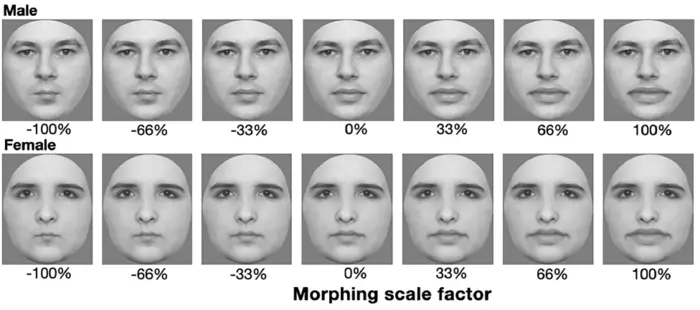A new study conducted by a team of psychologists at the University of Sydney has provided an intriguing perspective on how lip size can significantly impact perceptions of facial attractiveness. Under the guidance of Professor David Alais, the researchers delved into the nuances of body image and beauty standards through the lens of digitally manipulated facial images. The findings, which emerged from significant experimentation, suggest that not only do preferences for lip size vary by gender, but they are also influenced by the recent visual exposures of the observer. Essentially, this study reveals layers of complexity within perceived beauty, highlighting how subjective standards can shift with exposure to varying aesthetics.
In a society where beauty norms are frequently set by media portrayals and social influence, understanding the psychology behind these perceptions becomes paramount. The researchers’ approach involved presenting participants with a series of digitally altered images displaying faces with different lip sizes, crafted to either exaggerate or diminish the fullness of lips. This experimental method allowed the team to measure attractiveness ratings across a diverse set of faces, effectively setting the stage for a combination of social psychology and visual perception research. Throughout this process, they documented preferences that were not only subjective but also fluctuated based on temporary adaptation effects following exposure to the selected images.
The study’s results revealed a compelling dichotomy in lip size preferences between male and female observers. Female participants exhibited a strong attraction to plumper lips when viewing images of female faces. Conversely, male participants tended to prefer female faces with lips that were closer to their natural, unaltered state. This disparity suggests that individual experiences and possibly ingrained gender biases can directly influence how beauty is perceived. What is particularly fascinating about these findings is that they align closely with the reality of ongoing cosmetic trends, where fuller lips are often glamorized while maintaining a more subtle aesthetic for male facial features.
Another critical insight from the research is the so-called “adaptation effect,” a phenomenon where prolonged exposure to a particular stimulus, such as a specific lip size, alters future perceptions of similar faces. When participants were exposed to fuller lips, subsequent evaluations of other faces displayed with similar sizes led to higher attractiveness ratings. Conversely, initial exposure to thinner lips skewed preference towards facial images that maintained that less pronounced fullness. This significant adaptation effect could reflect an ingrained psychological mechanism that underscores how quickly human assessments can change based on immediate visual stimuli.
Additionally, the research uncovered that lip size could be perceived in relative isolation from the entire facial structure. Nakedly assessing the attractiveness of lips suggests that our brains may distinctly encode this feature, elevating its significance in the broader conversation regarding physical attractiveness and overall facial aesthetics. This finding points to a unique aspect of visual processing that prioritizes certain facial characteristics, encouraging further investigation into the cognitive mechanisms at play.
Amidst rising instances of cosmetic procedures like lip fillers, the implications of this study become increasingly relevant. Professor Alais articulated concerns that continual exposure to modified aesthetics could foster conditions like “lip dysmorphia”—a term describing a disparity between an individual’s perceived lips and societal beauty norms. He posited that exposure to certain standards of beauty, particularly those propelled by media and popular culture, can condition our perceptions of what is deemed attractive, with larger societal implications for body image and self-esteem. This concern extends beyond individual preference, resonating throughout collective attitudes toward beauty.
The findings come at a vital time in the fashioning of personal and societal beauty ideals wherein cosmetic procedures are more accessible than ever. As people increasingly alter their appearances to meet perceived beauty standards, these psychological effects could contribute to rising incidences of dissatisfaction among individuals regarding their own features. It raises critical questions about the ethical dimensions of beauty culture in the context of mental health and self-perception.
Research into these adaptive judgments and societal influences continues to highlight the profound power that visual images hold in shaping our understanding of attractiveness. The interrelation between psychological conditioning and physical appearance speaks to broader issues concerning identity, self-worth, and how we engage with societal standards. Although this study focused primarily on lip size, the methodologies and implications could inform explorations into other features, providing insightful frameworks for understanding aesthetic value.
While the immediate responses to the findings point to significant implications, Professor Alais advocates for a deeper exploration of how visual adaptations shape perceptions over time. Future studies ought to examine the long-term repercussions of these social influences, particularly how cosmetic procedures may redefine normative beauty standards and contribute to psychological ramifications in individuals experiencing body dissatisfaction.
In conclusion, the research out of the University of Sydney has laid a robust foundation for discussions on beauty that are nuanced and complex. As society shifts toward an acceptance of diverse beauty standards, it is crucial that ongoing research continues to illuminate how perceptions are informed, shaped, and ultimately, transformed by sociocultural forces and individual experiences. These findings not only contribute to academic discourse but also pave the way for more comprehensive conversations about self-image, societal expectation, and the psychological realities that underpin them.
Subject of Research: People
Article Title: Distortions of lip size bias perceived facial attractiveness
News Publication Date: 9-Apr-2025
Web References:
References:
Image Credits: The Royal Society/David Alais/University of Sydney
Keywords: Psychological science, Experimental psychology, Gender bias, Body image, Cosmetic procedures, Visual perception




